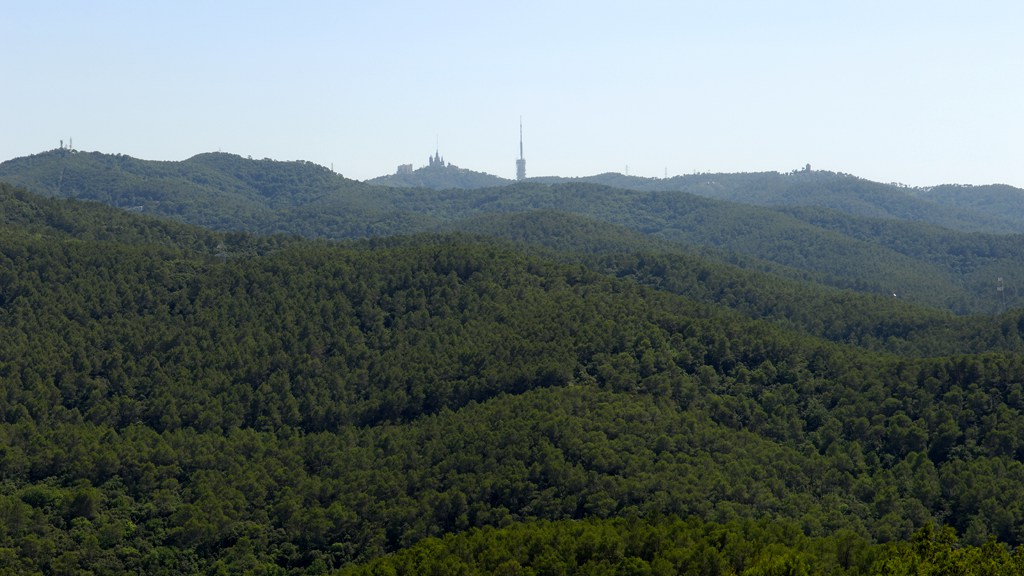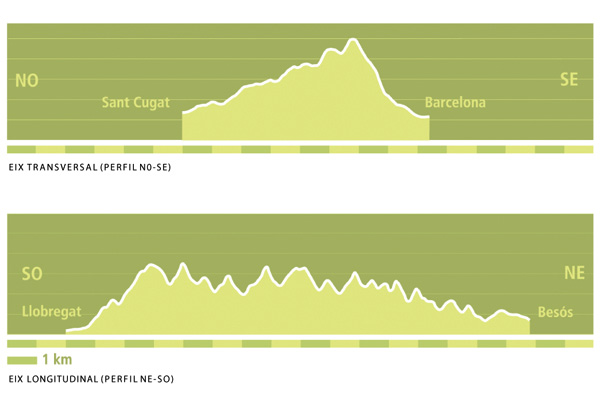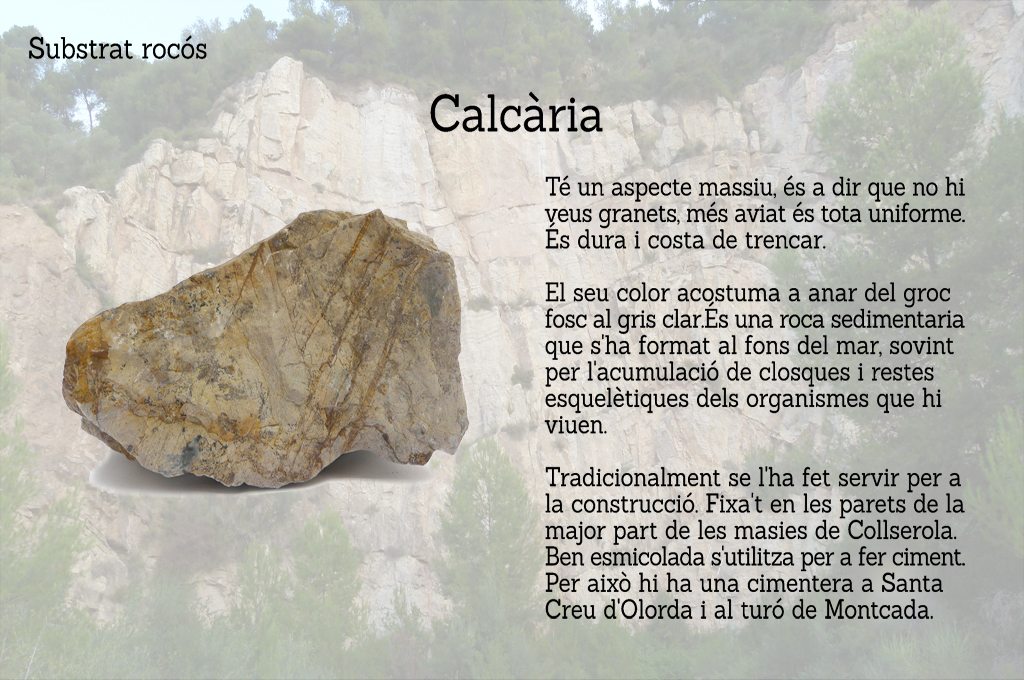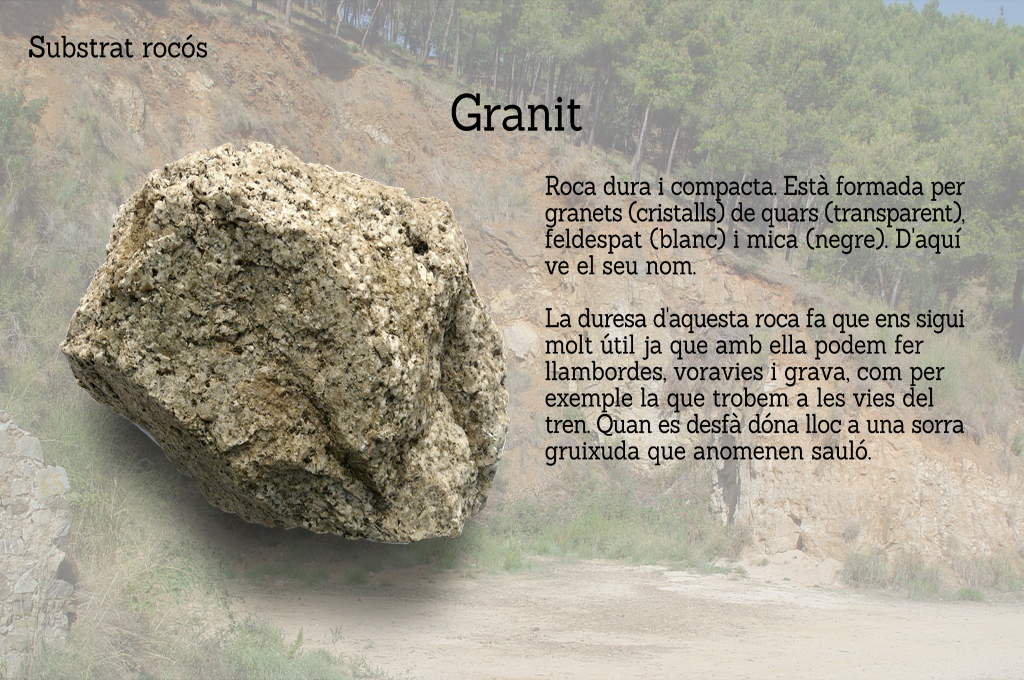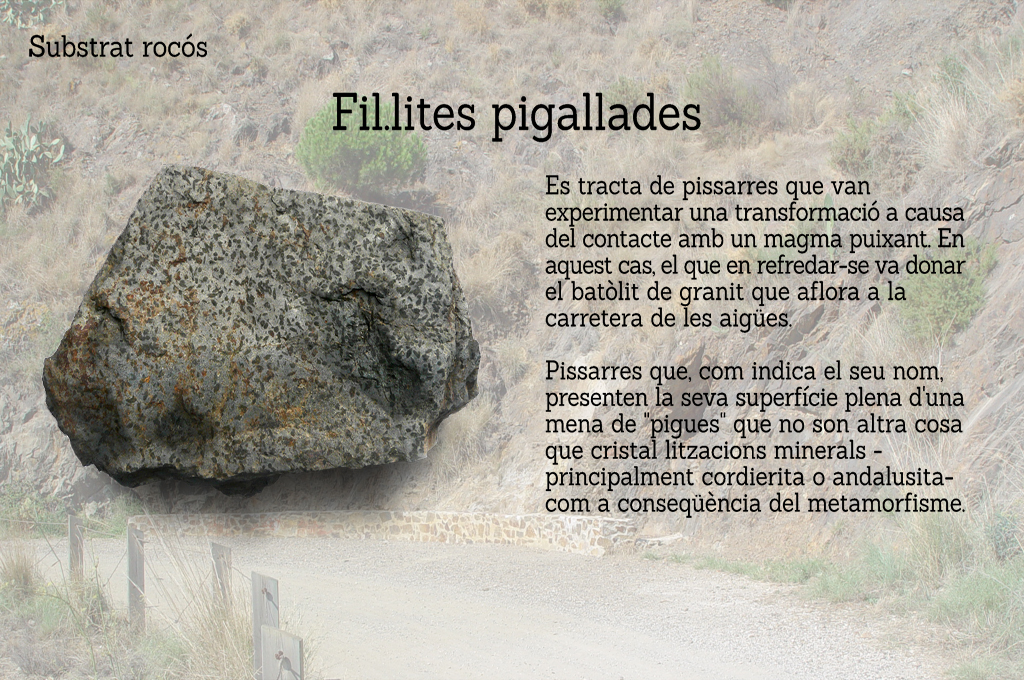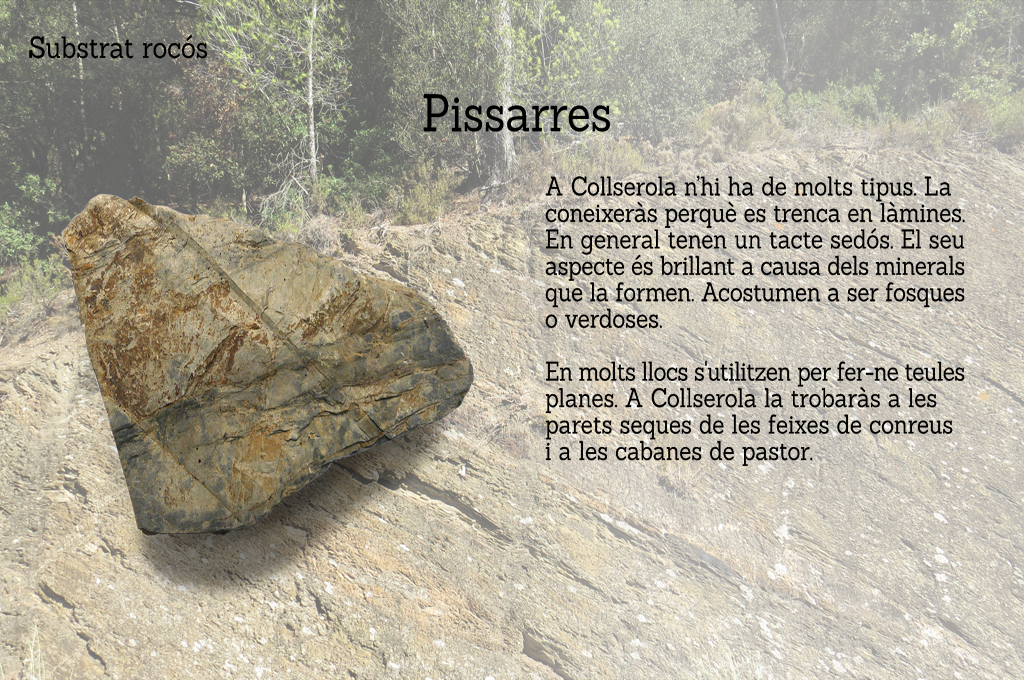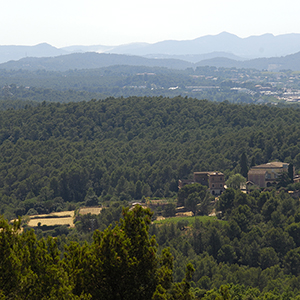The Collserola massif forms part of the central sector of the Catalan coastal mountain range. Its boundaries are clear: the River Besòs to the east, the Llobregat to the west, the Sant Cugat and Rubí streams to the north and the Barcelona plain to the south.
The Serra de Collserola mountain range covers an area of approximately 11,100 ha, being some 17 km long and 6 km wide. It has a gentle and fairly asymmetric relief: while the Vallès ridges are long and descend gradually, the sea-facing slopes are shorter and steeper.
Collserola is spread over three comarques or geographical districts: Baix Llobregat, Vallès Occidental and Barcelonès. The peak of Tibidabo, the highest mountain in the range (512 m), is the natural vertex that separates the three.
There are several new centres of population with part of their municipal district within the area of the Serra: Barcelona, Montcada i Reixac, Cerdanyola del Vallès, Sant Cugat del Vallès, El Papiol, Molins de Rei, Sant Feliu de Llobregat, Sant Just Desvern and Esplugues de Llobregat.
The Serra’s hydrographic network is small. However, the extensive forest coverage and impermeability of the bedrock add to groundwater retention in the soil and slow runoff into the streams (riera). All of which results in a significant underground flow of water, which rises in numerous springs.
The water is distributed into three catchment areas: Llobregat, Besòs or directly into the sea. The Llobregat basin is the largest. It collects water from the western side of the mountain, the zone between Sant Just Desvern and El Papiol, whose most significant watercourse is the Riera de Vallvidrera, the only almost permanent flowing body of water in the Serra.
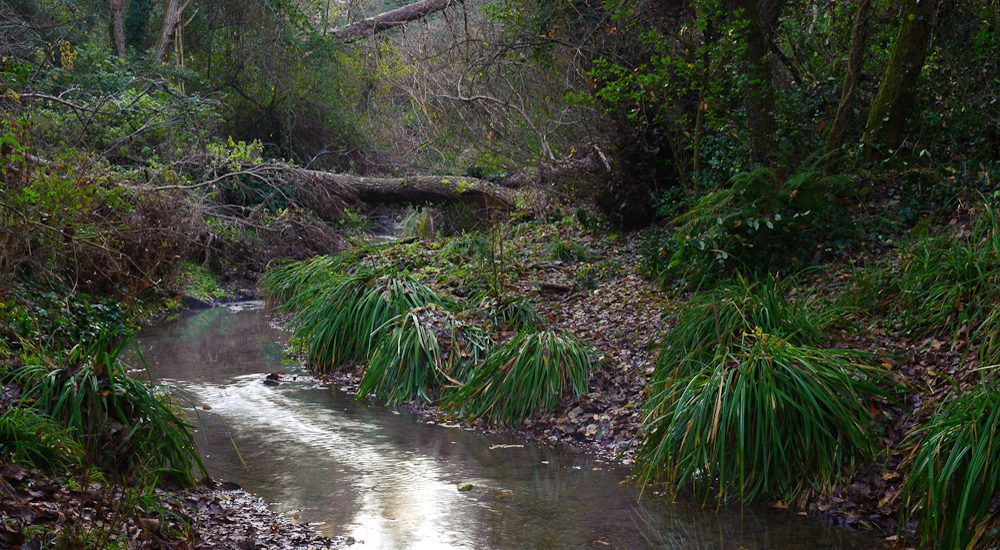
The Besòs basin collects water from the northern and eastern slopes of the mountain range. Almost all the torrents converge in the Riera de Sant Cugat, which flows into the River Ripoll. Only a few small streams from the Montcada area and the Barcelona plain are direct tributaries of the Besòs.
The water collected on the Barcelona slope flows through the city’s sewer system before draining directly into the sea.
The Serra de Collserola rises up between two sedimentary basins: the Vallès depression and, to the south-east, the coastal plain. Its moderate heights and gentle undulations indicate the age of the mountain range. It is a geological unit composed almost exclusively of igneous and metamorphic rock from the Paleozoic (Primary era), affected by movements of the earth’s crust, which we know as the Hercynian orogeny.
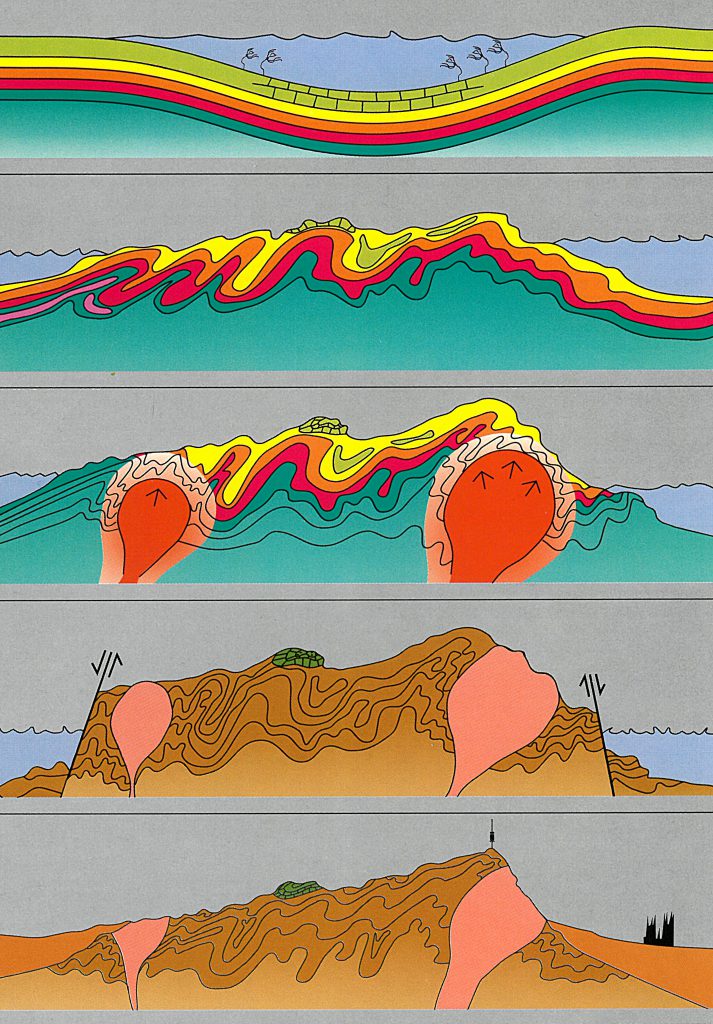
The first phase of the Hercynian orogeny produced the transformation of lutites (originating from sedimentary clays) into slates and phyllites, which are the most abundant rocks in the Serra. This phase also saw the formation of most of the quartz seams.
Subsequently, magma intrusions gave rise to the production of granites: the sudden sharp rise in temperature and pressure led to a rapid process of alteration and modification in the host rocks, a phenomenon known as contact metamorphism. This intrusion of granitoids was accompanied by the emplacement of porphyry dikes along the fractures.
The coastal mountain ranges developed during the Alpine orogeny, in the Secondary era. Subsequently, the Serra de Collserola was formed as a block delimited by normal faults. The sea flooded the Barcelona plain and entered the Llobregat valley, with marine sedimentation from this period giving rise to the formation of reef limestones, such as those to be found in El Papiol.
More recently, during the Quaternary period, the Serra has been subjected to erosion and the more depressed zones, such as valleys and torrents, have been experiencing the continuous sedimentation of detrital material.
Rock types
Rocks change continuously over time. However, the gradual nature of such changes make them difficult to appreciate. These transformations can be contextualised within what is known as the geological cycle, which gives rise to the formation of the diversity of rocks to be found on Collserola.

